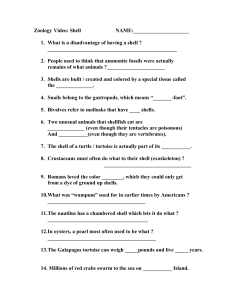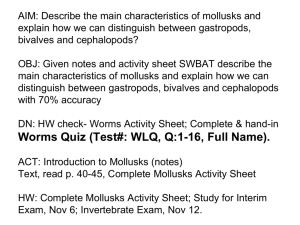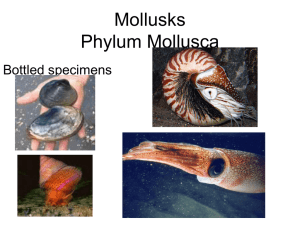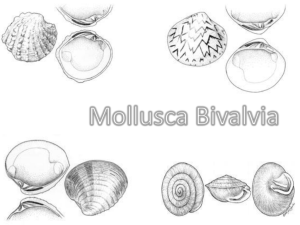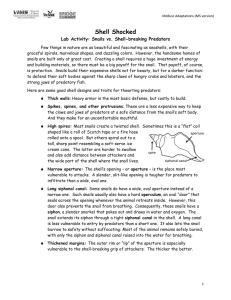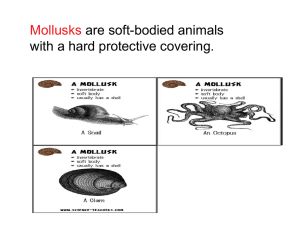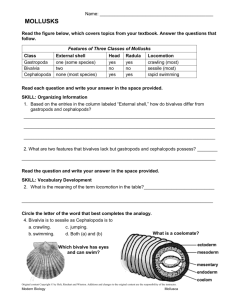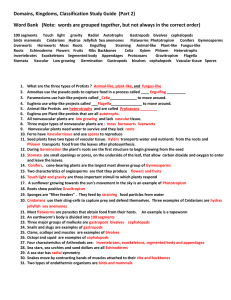Answer Key
advertisement
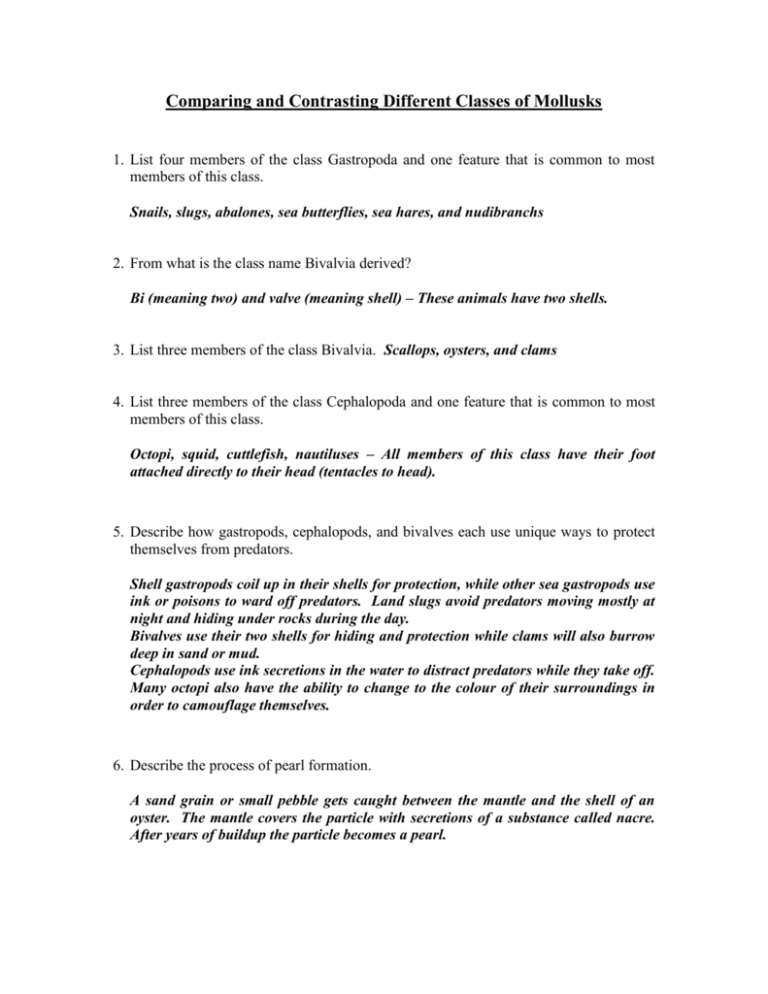
Comparing and Contrasting Different Classes of Mollusks 1. List four members of the class Gastropoda and one feature that is common to most members of this class. Snails, slugs, abalones, sea butterflies, sea hares, and nudibranchs 2. From what is the class name Bivalvia derived? Bi (meaning two) and valve (meaning shell) – These animals have two shells. 3. List three members of the class Bivalvia. Scallops, oysters, and clams 4. List three members of the class Cephalopoda and one feature that is common to most members of this class. Octopi, squid, cuttlefish, nautiluses – All members of this class have their foot attached directly to their head (tentacles to head). 5. Describe how gastropods, cephalopods, and bivalves each use unique ways to protect themselves from predators. Shell gastropods coil up in their shells for protection, while other sea gastropods use ink or poisons to ward off predators. Land slugs avoid predators moving mostly at night and hiding under rocks during the day. Bivalves use their two shells for hiding and protection while clams will also burrow deep in sand or mud. Cephalopods use ink secretions in the water to distract predators while they take off. Many octopi also have the ability to change to the colour of their surroundings in order to camouflage themselves. 6. Describe the process of pearl formation. A sand grain or small pebble gets caught between the mantle and the shell of an oyster. The mantle covers the particle with secretions of a substance called nacre. After years of buildup the particle becomes a pearl.
